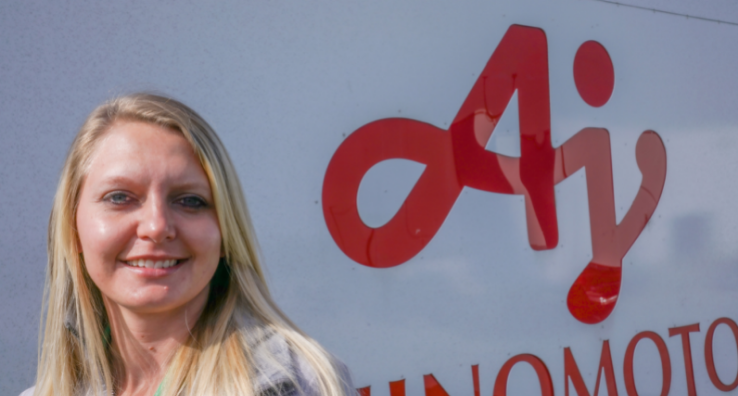Continuous Skills Training to Build a Culture that Retains Employees

A few months ago, Alchemy President Paul Reynish wrote about how training can be an effective employee retention tool during the current labor shortage. Constant staff turnover means companies have to keep starting over with new employees, assuming they can fill open positions.
Better training leads to higher employee engagement, less absenteeism and employee turnover, and greater customer satisfaction and employee productivity. In a 2021 LinkedIn workplace survey, 94% of employees responded that if a company invested in helping them learn, they would stay longer.
To highlight some practical solutions to improving training effectiveness, let’s look at how one of our customers is approaching its training program. Our friends at Conagra Brands have implemented a sophisticated but simple training philosophy they call “Continuous Skills Development” (CSD).
CSD helps the company identify and eliminate losses in various processes caused by human factors like skill loss, failure, or improper and incomplete training. This meticulous process allows Conagra to identify and deliver the skills their 20,000+ employees need to succeed in their jobs.
Conagra’s mission statement for its CSD program lays out their approach: “The expected outcome is a culture where expectations are clear, the path to attain new skills is defined, and metrics are in place to continuously identify development opportunities for our team members.” I’m a big fan of Conagra’s mission, and I’m proud that Intertek Alchemy plays a role in their success.
Chris Jones, Senior Learning Systems Analyst at Conagra Brands, participated in a recent Intertek Alchemy webinar to discuss how the company is putting this philosophy into practice. He had this to say about the key first step in the process: “For a successful training program, all departments have to buy into the idea that effective skill development is an absolute necessity to have a continuous improvement culture where people work together to identify and address losses.”
Conagra’s CSD process design consists of four key steps: planning, training, validation, and process review. These steps constantly undergo assessment and refinement to improve outcomes and eliminate losses. Let’s look at each one to understand how this process flows.
Planning
Planning is probably the most important and initially the most resource-intensive step in the CSD process. To ensure a successful training program, it’s critical to prepare trainers and learners, and define a path for employees to develop new job skills.
One of the first steps is identifying subject matter experts to help develop skill inventories, training materials, and on-the-job (OTJ) activities included in the training curriculum. This is where you find the right people to serve as trainers for classrooms, mentors for OTJ training, and validators.
Training
This is where the planning and preparation apply for new hires in their quest for new job skills. Conagra starts by presenting safety and process playbooks in a quiet classroom setting, incorporating Intertek Alchemy courses specific to the job as needed.
But classrooms are not where the majority of Conagra training takes place. Group training in classrooms is ideal for certain types of training, such as high-level awareness training, safety training, and regulatory compliance topics. But according to Jones, “We understand that people learn in different ways, and we’ve found that only about one-third of training should be conducted in the classroom with courses and training documents. Most job-specific learning should be designated for hands-on OJT with a qualified mentor.”
Let’s take a moment to distinguish between a mentor and a buddy, which is a common training role. In the buddy system, companies are simply pairing a new hire with someone who does the job. Buddies share random tasks, convey inconsistent information, and often rely on memory or habits vs. identifying processes. “I’ve seen buddy systems where a buddy signs up for the role because they see it as an opportunity to let the new guy watch the machine while they take breaks,” added Jones.
On the other hand, mentor systems consist of trained subject matter experts who use standardized materials to deliver consistent training and reinforcement to cover all job skills. Many companies leverage technology, like Alchemy Playbook, to show new hires training courses on specific equipment and processes even before they step on the floor. This way they are already familiar with the equipment when seeing it for the first time. Then, once on the floor, a new employee should start by mostly observing their mentor performing the work while demonstrating the processes and pointing out the different steps involved. Gradually, those roles are reversed where the trainee shows the mentor their abilities to perform the job tasks.
Conagra leadership believes exceptional mentoring is more concerned with teaching people how to think and make informed decisions than telling trainees what to think. A far cry from the buddy system, to say the least.
Validation
Another critical step in the process is validation, which Conagra sees as an audit of their new employees’ acquired skills. This includes the day-to-day operational requirements they need to perform the job and plant safety, quality assurance, and troubleshooting knowledge.
At Conagra, validation is scheduled for 30 days after employees complete their initial training curriculum, with revalidation at least annually. During this process, trainees show their knowledge through a series of verbal questions, demonstrations, and behavioral observations. Audits are conducted on the shop floor with qualified skill auditors — CSD team members who are not the employees’ trainers or mentors to reduce bias and maintain an independent role.
Conagra adopted the Alchemy Coach app about four years ago to streamline the process and eliminate clerical work. Validators prefer having the automation of using a tablet to conduct validations on the floor rather than keeping stacks of paper organized. Scheduling, scoring, and reporting are all taken care of on the backend through the Alchemy platform.
The Coach app tabulates the results of the validation. Conagra requires an 85% passing score for all non-critical skills and 100% competency for critical job skills like lock-out-tag-out knowledge. They then share with the employee’s team where an action plan is developed to address gaps for incomplete validation.
Process Review
Conagra uses Intertek Alchemy tools to measure how they’re doing by job, production line shift, and overall plant location compared to team goals. The results are published for the teams while the CSD group analyzes trends monthly and makes the necessary updates to training content and practices.
Another internal auditing practice Conagra uses is called “Leadership on the Floor.” At least twice a week, every plant’s leadership team member blocks time from all their other activities to don their PPE and spend about 90 minutes on the production shop floors. They have conversations with associates and observe work practices. Alchemy Coach is again used in many of these interactions to foster positive reinforcement.
Since implementing its Continuous Skills Development program, the results have been dramatic. A recently acquired bakery, for example, saw huge improvements over 18 months. Recordable injuries were down 50%, and efficiency improved by 30%.
On the retention front, they also saw turnover reduced by more than half, from 23% to 12%. Jones explained why: “Employees gained confidence in their abilities and took pride in the achievements they could accomplish as a team. The training program made their work more meaningful, and thus they were more willing to stick around.”
These are outstanding results. Contact us to learn more about Conagra and how other clients are working with Intertek Alchemy to improve employee retention with better training.





